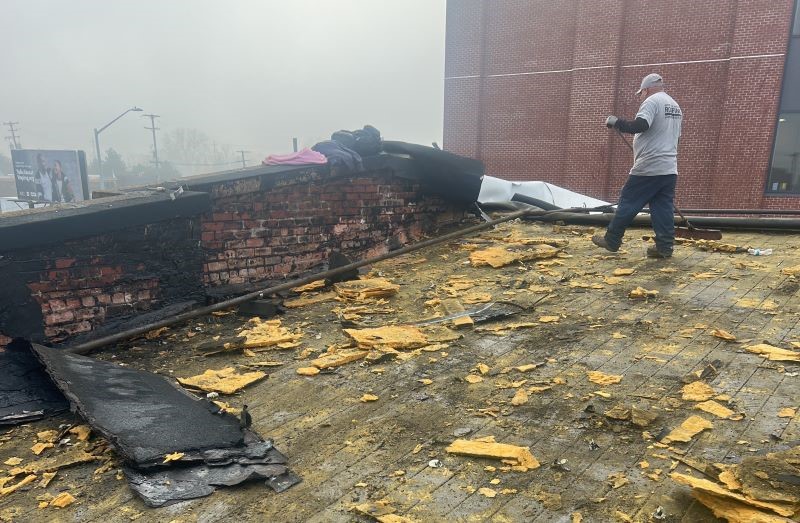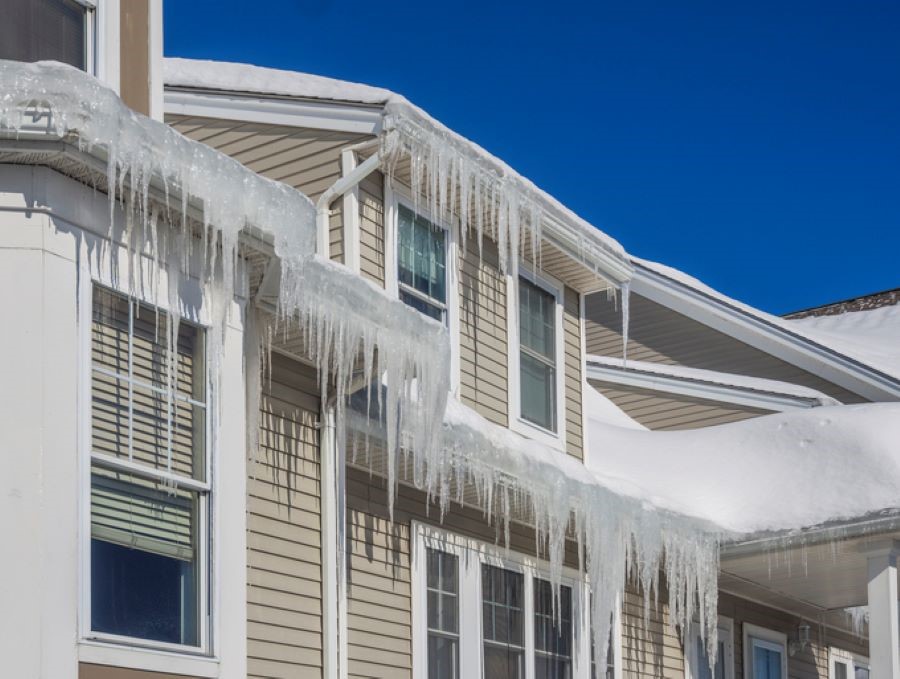Let’s be honest, roofing issues can happen at any time. Mother nature doesn’t care if it’s winter in West Michigan. If your roof has a leak or some other major issue, and the temp has dipped and the snow is flying, you might hesitate to contact us. Don’t! Winter roofing not only possible, but necessary.
You need to get your roof fixed as quickly as possible, as the roofing materials will expand and contract as the weather thaws and re-freezers, which could make your problem even worse.
While cold weather and wintry conditions have a discernible impact on what roofers need to consider before repairing or, more likely, replacing a roof, it’s a misconception that roof work can’t be done in the winter. Roofers work all year round, and we’ll make sure your job is done right.
How We Roof in the Winter
When it comes to roofing in the winter, things that may seem like obstacles really aren’t that big of a deal. For instance, if your roof is covered in snow, we’ll simply clear it off before we get to work. Obviously, this is necessary so we can get to the actual roof, but it doesn’t take long.Secondly, the cold, except in extreme conditions, isn’t as bothersome as one might think. As experienced roofers, we dress appropriately and also keep ourselves warm with hard work. Some roofers actually prefer the cold of winter to the sweltering heat of summer.
What Temperature is Too Cold for Roofing?
When it comes to roofing in the winter, we need to pay close attention to the temperature. Most materials can be installed in any weather, but fiberglass shingles should only be installed when the temperature is 40˚ F or warmer.Asphalt shingles can be installed in cold weather, but doing so requires extra care by roofers. In cold temperatures, asphalt shingles can crack when bent, so roofers need to avoid bending any shingles during installation. They also become more difficult to cut. Colder temps also impact the air pressure of pneumatic guns, so that needs to be adjusted to avoid over- or under-driving the nails, or shingles need to be hand nailed. And because asphalt shingles need a perfect seal with their overlapping counterparts—a seal that is assisted greatly by the heat from the sun—it may take several days or more for the weather to warm up enough to bond those seals. If temp is below 40˚ F, sealant may need to be hand applied under each shingle to create a quick bond. Otherwise, when the ambient temperature of the sun warms the roof in the spring, it will activate the sealant on the back of the shingles.
Rubber and rolled roofing can also be installed in cold weather, but care needs to be given to the temperature of the adhesives to ensure proper bonding.
If you can wait, the best time to replace a roof on a house is in the spring, as sustained higher temperatures will eliminate the extra care and time required to do the job right and allow the shingle seals to bond quickly. However, if you want (or need) to replace your roof during the winter months, you’ll be able to do so.
Think your roof might need to be replaced? Let us know and we’ll do a free inspection then discuss your needs and options. We’re experienced in winter roof replacement and will make sure the job gets done.
Subscribe to West Michigan Roofing's Blog





Comments